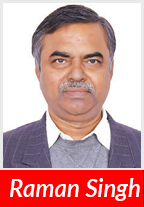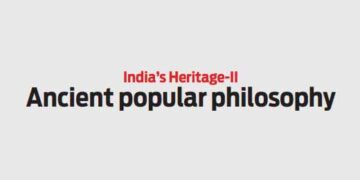 It is interesting to contrast the individualism, religiosity and exclusiveness of the IndoAryans as revealed in the Vedas, Brahmanas, Sutras, Shrutis and Shastras with the all-embracing approach of the Upanishads, which override all barriers of caste and class and every other external and internal difference, and which betoken a kind of metaphysical democracy: He who sees the One Spirit in all, and all in the One Spirit, henceforth can look with contempt on no creatures. However, there are metaphysical ambiguities in the questions considered viz. the ethic of individual perfection: there is nothing higher than the person.
It is interesting to contrast the individualism, religiosity and exclusiveness of the IndoAryans as revealed in the Vedas, Brahmanas, Sutras, Shrutis and Shastras with the all-embracing approach of the Upanishads, which override all barriers of caste and class and every other external and internal difference, and which betoken a kind of metaphysical democracy: He who sees the One Spirit in all, and all in the One Spirit, henceforth can look with contempt on no creatures. However, there are metaphysical ambiguities in the questions considered viz. the ethic of individual perfection: there is nothing higher than the person.
This probable overemphasis might have caused the social outlook to suffer, but the society of those times might have been considered as stabilised and, hence, the mind of man might continually have been thinking of individual perfection. In quest of this it wandered about in the heavens and in the innermost recesses of the heart. Despite all these metaphysical flights of the mind and of the imagination, the message of the Upanishads found willing and eager listeners throughout India and powerfully moulded the national mind and character.
Small creative minority
There is no important form of Hindu thought, heterodox Buddhism included, which is not rooted in the Upanishads, but the ideas of their authors were confined to a small ‘creative minority’ and hence did not permeate to the masses, thus leading to intellectual separation between them. This led to new movements of materialism, agnosticism, and atheism – marking a significant stage in the development of ancient popular philosophy.
However, almost the entire literature on materialism was lost; the only references found are in criticisms of it and in elaborate attempts to disprove the materialist theories. Like the Upanishads, they also inveighed against magic and superstition, attacked authority and vested interests in priestcraft and traditional beliefs, and loudly proclaimed the freedom of belief.
Their spirit was comparable to modern materialistic approach, their rationalist and existentialist impulses originating in political conflict of the epochs leading to disintegration of faith and loss of the spirit of inquiry. Out of this turmoil and social maladjustments, newer systems of philosophy took shape; notably Jain and Buddhist. The early Buddhist philosophical treatises were written in Prakrit, the popular language of the era the Buddha lived in, from which developed the Pali language of early Buddhist scriptures of Hinayana doctrine. Nagasena’s or Nagarjun’s Milinda-Panho, or Questions of Menander, composed at the beginning of the Common Era (CE), is a masterpiece of Pali literature.
Sanskrit language revival
However, centuries after the Buddha, when there was a revival of Brahmanism in India and of Sanskrit language and scholarship, Buddhist scholars began composing their literary and philosophical works in Sanskrit. Asvaghosa’s writings and plays (the earliest plays we have), which are meant to be propaganda for Buddhism, are in Sanskrit.
He also wrote the Buddhacharita, a life of the Buddha, which was popular in India, China and Tibet. Another famous Sanskrit scholar of the day is Nagarjuna, one of the greatest philosophical minds (famous for ‘Shunyavad’) that India ever produced; he was also a master of Pali (Nagasen) and responsible for formulating the Mahayana doctrine.
The period of efflorescence in Buddhist literature is also marked by the development of thought and activity in many directions; and out of this ferment grew the six systems of Indian philosophy (Sad-darshana) which represent an independent approach and yet not isolated from each other but rather forming the parts of a larger plan. These six philosophical systems are Nyaya, Vaishesika, Sankhya, Yoga, Mimansa and Vedanta. The main strands of each school of thought, along with Patanjali’s Yogasutra, are endowed with a thorough knowledge of India’s philosophical achievements.
Doubtless this background affected Indian life and character, exerting a powerful influence on the philosophy of the periods under consideration, and produced that atmosphere of tolerance and reasonableness – that acceptance of free thought in matters of faith, that desire to live and let live– which are the hallmarks of ancient popular Indian philosophy, as they are of its culture and literature.














 G20 podium
G20 podium

